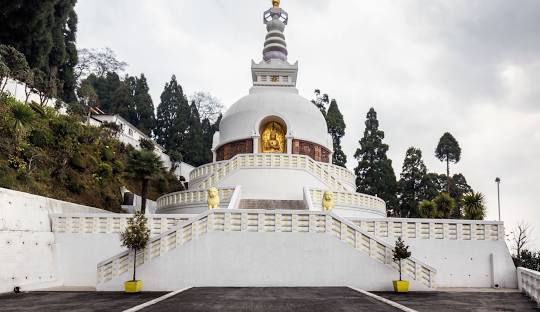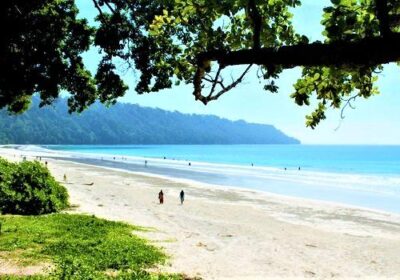Exploring the Japanese Temple: A Peaceful Retreat in Darjeeling
The Japanese Temple, also known as the Nipponzan Myohoji Buddhist Temple, is a serene and peaceful retreat located in the beautiful town of Darjeeling. Situated near the Peace Pagoda, this temple is a symbol of tranquility and spiritual harmony. This guide will provide you with insights into its history, architecture, and essential visitor information.
History and Significance
The Japanese Temple was built in 1972 by the Nipponzan Myohoji Buddhist Order, founded by Nichidatsu Fujii. The temple aims to promote peace and unity among people of different cultures and religions. It stands as a testament to the enduring friendship between India and Japan and their shared spiritual heritage.
Architectural Beauty
1. Temple Structure: The Japanese Temple is a traditional Buddhist structure with a simple yet elegant design. The white facade and sloping roofs create a tranquil atmosphere, perfect for meditation and prayer.
2. Peace Pagoda: Adjacent to the temple is the Peace Pagoda, a striking white structure that stands as a symbol of peace and harmony. The pagoda features four statues of Buddha, each depicting different stages of his life.
3. Prayer Hall: The prayer hall inside the temple is adorned with beautiful paintings and murals depicting the life of Buddha. The hall is a peaceful place for chanting and meditation.
4. Gardens and Landscaping: The temple complex is surrounded by well-maintained gardens and pathways. The lush greenery and colorful flowers enhance the serenity of the environment.
Visitor Information
1. Best Time to Visit: The best time to visit the Japanese Temple is during the spring and autumn months (March to May and September to November) when the weather is pleasant and conducive to outdoor activities.
2. How to Reach: The Japanese Temple is located about 10 minutes from the Darjeeling town center. You can hire a taxi or take a leisurely walk to reach the temple. The Peace Pagoda is located within the same complex.
3. Visiting Hours: The temple is open to visitors from early morning until late afternoon. It is advisable to check the specific opening hours before planning your visit.
4. What to Wear: Dress modestly and remove your shoes before entering the temple premises. Comfortable walking shoes are recommended for exploring the gardens and surrounding areas.
5. Photography: Photography is allowed in the temple complex, but be respectful and avoid using flash inside the prayer hall. The Peace Pagoda offers excellent opportunities for scenic photographs.
6. Participation in Prayer: Visitors are welcome to participate in the daily prayer sessions and chanting. These sessions provide a unique insight into Buddhist practices and the temple’s spiritual ambiance.
Conclusion
The Japanese Temple in Darjeeling is a haven of peace and tranquility, offering visitors a chance to connect with their inner selves amidst beautiful surroundings. Its serene environment, coupled with the inspiring architecture of the Peace Pagoda, makes it a must-visit destination for those seeking spiritual enrichment and a break from the hustle and bustle of everyday life.






Leave feedback about this